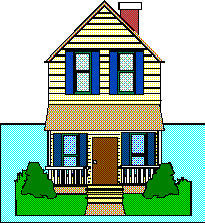 Guidelines for
Cleaning up Former
Methamphetamine
Labs
Guidelines for
Cleaning up Former
Methamphetamine
Labs
Missouri Department of Health and Senior Services
Bureau of Environmental Epidemiology

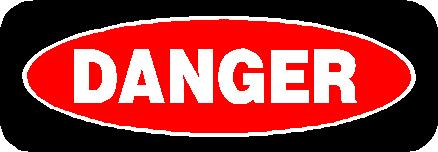 Why are we producing these guidelines?
Why are we producing these guidelines?
Meth labs, used to make the illegal drug methamphetamine, are discovered in houses,
apartments, motel rooms, sheds, and even motor vehicles. In 1999, federal, state and
local authorities were involved in the seizure of more than 900 labs in Missouri alone,
and the number of meth labs seized by law enforcement agencies increases each year.
As agencies seek to restrict the products needed to make methamphetamine, the
methods and the locations of its production are changing. This adds to the difficulty
health and environmental agencies face in assessing meth related health risks.
The Missouri Department of Health and Senior Services’ (DHSS) Bureau of
Environmental Epidemiology has created these basic guidelines to assist property
owners and the general public in cleaning up former meth lab properties.
How can you find out if a property has been used to make
meth?
Currently, there is no comprehensive method for tracking or listing properties that were
used as meth labs. You should call your local law enforcement agency to
confirm that a seizure of chemicals took place on the property, and to
obtain the name of any hazardous materials contractor who may have
removed materials. The contractor should have information on what
chemicals were present on the property. Additional information may be
obtained from your county health department, fire department, or the owner
of the property.
Why the concern about cleaning up illegal meth labs?
Properties used to produce meth will usually be found with a lab-like setting; including
containers of chemicals, heat sources, and various types of lab equipment. Typically,
after a lab is discovered by law enforcement, the bulk of any lab-related debris, such as
chemicals and containers, is removed. However, it is possible a small amount of
contamination is left on surfaces and in absorbent materials (carpets, furniture), sinks,
drains, and ventilation systems. Though found in small amounts, meth lab
contaminants may pose health threats to persons exposed to them.
1
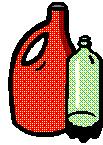
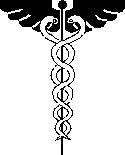 What are the meth lab contaminants?
What are the meth lab contaminants?
The Environmental Protection Agency (EPA), working with DHSS, has been seeking to
identify contaminants found at former meth lab properties throughout Missouri. There
are different “recipes” for making meth, each using different
ingredients. The making of meth can also be performed in different
stages at different locations. EPA has collected environmental
samples from properties after meth labs were seized. EPA
concentrated its sampling efforts on areas to which a resident would
most likely come in contact with contamination, such as a property’s
surfaces and indoor air – but EPA also collected samples from
containers, soil, drains, filters, ductwork, etc.
DHSS has examined sampling results and found many chemicals, not related to meth
labs, that can be found in most homes. The more common household chemicals can
be found in carpet, household cleaners, and paints. These chemicals include: benzene,
methylene chloride, trichloroethane, and toluene. It is suspected that meth-related
chemicals include solvents such as paint thinners, phosphorous from matches and road
flares, lithium strips from lithium batteries, sodium metal, and anhydrous ammonia
which is often found in insulated coolers and small propane cylinders.
What are possible health effects from exposure to meth lab
contaminants?
Many of the contaminants present during meth’s cooking process can
be harmful if someone is exposed to them. These contaminants can
cause health problems including respiratory (breathing) problems,
skin and eye irritation, headaches, nausea, and dizziness. Acute
(short-term) exposures to high concentrations of some of these
chemicals, such as those law enforcement officers face when they
first enter a lab, can cause severe health problems including lung damage and burns to
different parts of the body.
There is little known about the health effects from chronic (long-term) exposure to
contaminants left behind after a meth lab is dismantled. Until the contaminants have
been identified, their quantities measured, and their health effects known, DHSS
advises property owners to exercise caution and use the safest possible cleaning
practices in dealing with a former meth lab property and any possible remaining
contamination.
2
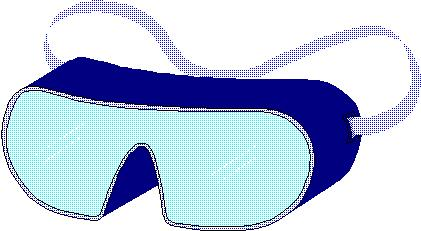
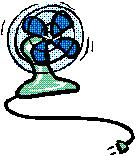 How can the property be cleaned up?
How can the property be cleaned up?
There is currently no official guidance or regulations on how to clean up a former meth
lab property for reoccupation. DHSS is working to find an answer that will protect the
public and be practical for property owners. Responses across the country to the
cleanup of these properties have ranged from doing nothing to complete demolition.
Until a cleanup standard is determined, DHSS advises owners to do their best to
thoroughly clean up these properties.
DHSS believes the safest way to clean up a former meth lab is to hire environmental
companies trained in hazardous substance removal and cleanup. Owners who clean
their own properties should be aware that household building
materials and furniture can absorb contaminants and give off
fumes. Use caution and wear clothing to protect your skin, such as
gloves, long sleeves, and eye protection during cleaning.
Some general guidelines include:
• Airing out the property
After a lab is seized by law enforcement officials, professionals trained to handle
hazardous materials are generally called in to remove lab waste and any bulk
chemicals. During this removal, every effort is made to air out the property for the
safety of the removal crew. For security reasons, the property is usually closed upon
their departure. However, this short-term airing-out may not be sufficient to clear out all
contaminants from the air inside the home. Be sure the property has been aired out for
several days before cleaning. After the initial airing out, good ventilation should be
continued throughout the property’s cleanup.
To promote the volatilization (dissolving into the air) of some types of chemicals,
windows and doors may be closed and the temperature inside the
properties increased to approximately 90 degrees Fahrenheit for a
few days. After cleaning and heating is complete, the property
should be aired out for three to five days to allow for any volatiles to
disperse from the house. Open all the windows and set up exhaust
fans to circulate air out of the building. During this time, the property
should remain off limits unless it is necessary to make short visits to
the property.
After the cleaning and final three to five days of airing-out, the property should be
checked for re-staining and odors, which would indicate that the initial cleaning was not
successful, and further, more extensive steps should be taken.
3

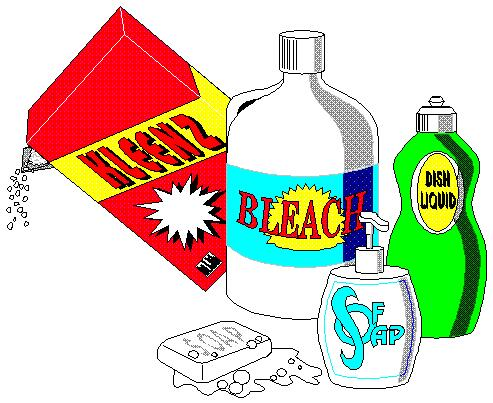
• Contamination removal and disposal
During the meth cooking process, vapors are given off that can spread and be absorbed
by nearby materials. Spilled chemicals, supplies and equipment can further
contaminate non-lab items. It is a good idea to remove unnecessary items from the
property and dispose of them properly. Items that are visibly contaminated should be
removed from the property and may be disposed of in a local landfill.
If you find suspicious containers or lab equipment at the property, do not handle them
yourself. Leave the area and contact your local law enforcement agency or fire
department. It is possible that some items may have been left behind after a seizure. If
the property has been searched by a hazardous materials cleanup team, the items have
most likely been identified and are not dangerous. However, some properties may not
have been searched or some items may have been overlooked in the debris or
confusion of a seizure.
Absorbent materials, such as carpeting, drapes, clothing, etc. can accumulate vapors
that are dispersed through the air during the cooking process. They also may collect
dust and powder from the chemicals involved in the manufacturing process. It is
recommended that these materials be disposed of properly, especially if an odor or
discoloration is present.
• Surfaces
Surfaces, such as walls, counters, floors, ceilings, etc. are porous and can hold
contamination from the meth cooking process, especially in those areas where the
cooking and preparation were performed. Cleaning these areas is very important as
people may come in frequent contact with these surfaces through skin, food
preparation, etc.
If a surface has visible contamination or staining, complete removal and replacement of
that surface section is recommended. This could include removal and replacement of
wallboard, floor coverings and counters. If this is not possible, intensive cleaning
followed by the application of a physical barrier such as paint or epoxy is recommended.
These areas should be monitored and the barrier maintained to assure that the
contamination is contained.
Normal household cleaning methods and products should remove any remaining
contamination. Don’t forget to wear gloves, protective clothing,
such as long sleeves, and eye protection. Again, ventilation of
the property should be continued throughout the cleaning
process.
4
 • Ventilation system
• Ventilation system
Ventilation systems (heating, air conditioning) tend to collect fumes and dust and
redistribute them throughout a home. The vents, ductwork, filters, and even the walls
and ceilings near ventilation ducts can become contaminated. Replace all of the air
filters in the system, remove and clean vents, clean the surfaces near system inlets and
outlets, and clean the system’s ductwork.
• Plumbing
While some of the waste products generated during meth manufacture may be thrown
along the sides of roads or in yards, most are dumped down sinks, drains, and toilets.
These waste products can collect in drains, traps, and septic tanks and give off fumes.
If a strong chemical odor is coming from household plumbing, do not attempt to address
the problem yourself; rather, contact a plumbing contractor for professional advice or
assistance. If you suspect the septic tank or yard may be contaminated, contact the
local health department.
• Repainting
When a surface has been cleaned, painting that surface should be
considered, especially in areas where contamination was found or
suspected. If there is any remaining contamination that cleaning did
not remove, painting the surface puts a barrier between the
contamination and anyone who may come in contact with those
surfaces. Even on those areas that people do not normally touch, painting will cover up
and “lock” the contamination onto the surface, reducing the chances that it would be
released into the air.
Should testing be done after cleanup?
If, after cleaning your residence using these guidelines, you are concerned about any
remaining contamination, or if your property still has an odor, visible staining, or causes
physical irritation to those exposed, it is advisable to have the property evaluated and
tested. Also, if you are concerned with liability issues, you should consider having the
property tested. Sampling is an expensive option, but may provide peace of mind for
property owners and families. You may want to contact your insurance carrier for
advice and assistance.
5
Remember these steps to cleaning a former meth property:
1 Determine if the property was used for meth production.
2 Air out the property before and during cleanup.
3 Remove all unnecessary items and dispose of them.
4 Remove visibly contaminated items or items that have an odor.
5 Clean all surfaces using household cleaning methods and proper personal
protection.
6 Clean the ventilation system.
7 Leave plumbing cleanup to the experts.
8 Air out the property for three to five days.
9 If odor or staining remains, have your home evaluated by a professional.
If, after reading this brochure, you have questions, please call
DHSS at
573-751-6102 or
1-866-628-9891.
6


For more information contact:
Missouri Department of Health and Senior Services
Bureau of Environmental Epidemiology
P.O. Box 570
Jefferson City, MO 65102-0570
(573) 751-6102 or
(866) 628-9891
www.dhss.mo.gov
This reprint funded by:
Missouri Department of Natural Resources
AN EQUAL OPPORTUNITY / AFFIRMATIVE ACTION EMPLOYER
Services provided on a nondiscriminatory basis.
This publication may be provided in alternative formats such as Braille, large print and audiotape by
contacting the office listed above. TDD users can access the above phone number by calling 1-800-735-2966.
09/00











